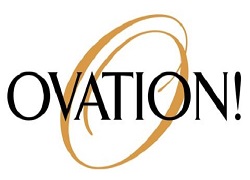Submitted by: Beth Lewis and Allison Maltby-Neely
School: Holman Middle School
Summary
The lessons contained in this unit plan are designed to teach students about the theme of heroes. Students will explore topics and terminology associated with the difference between idols and heroes. Students will be exposed to a variety of arts experiences, including, music and song, film, theatre and script writing, interpretive movement and individual reflection. Although the unit is designed to be used for any middle school student, it can be adapted for any level learner. The culminating project, the students will create a digital story about a hero that demonstrates the knowledge that they have attained throughout the course of the unit.
TIPC Ratings
Approaching: Students had to generate their own questions about what they wanted to learn about their chosen hero and this is what guided their research. They had to find their own research tools and resources relevant to their hero in order to create the digital story. Once information was gathered, students had to narrow down their material, organize their ideas and research, in order to create a digital story that met the requirements of the rubric.
Approaching: Students worked in groups throughout this project. Groups were student selected and effectiveness of the groups was assessed daily using a collaborative group work rubric. The teacher instructed students on how to collaborate purposefully without direct supervision. See rubric for details on group expectations.
Ideal: Students were given guidance and digital resources for how to create their digital story. From there, groups had to engage in critical thinking and problem solving in order to determine the appropriate application of tools to implement in their digital story. Samples were shown and in class, students evaluated other digital stories to determine the effectiveness of each element. Students had to be knowledgeable about their hero as well as their dramatic question in order to communicate their intended message.
Ideal/Target: Students had to synthesize many resources (i.e. Audacity, digital images, MovieMaker etc) as well as self-generated material (the narrative essay) in order to create a unique product beyond the assignment’s parameters. Students were given a great deal of time to explore the different resources. This promoted the risk-taking of several students as they learned to use digital tools in new and innovative ways. At the end of the process, students wrote journal entries to reflect upon their creative process.
Student Artifact
Download Files
- Digital Story Resources
- Reader’s Theatre Resources
- Lesson Plan
- Student Interviews
- Student Artifact 2: Hero Movie
- Student Artifact 3: Hero Movie





